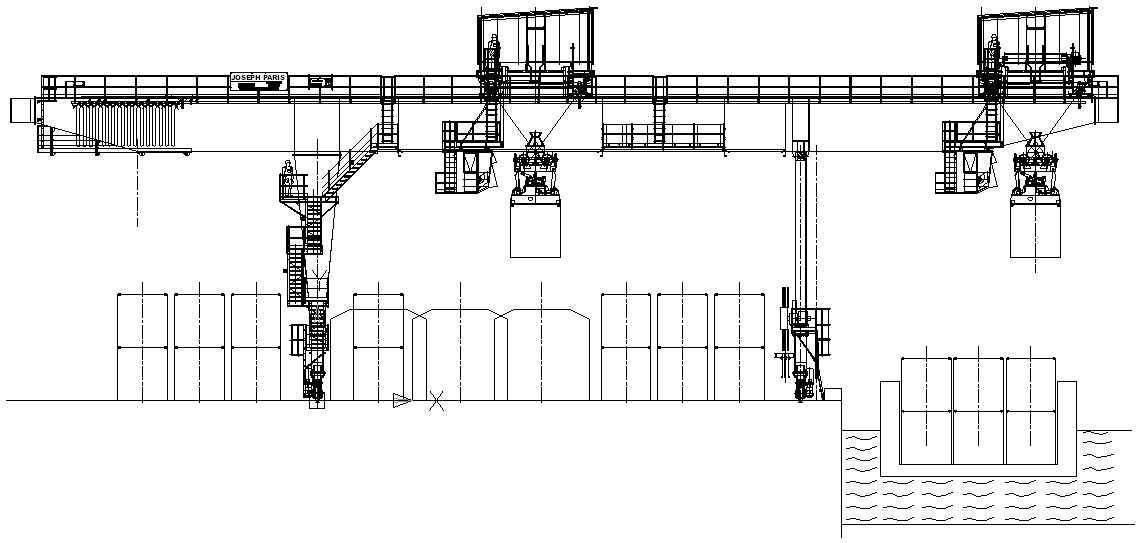At IDECO, precision engineering goes beyond just design and manufacturing— it extends into proactive maintenance and performance optimization. One of the most powerful tools in our thermal imaging, a non-invasive technique that allows us to detect early signs of equipment stress before they escalate into major failures.
Proactive Problem Detection with Thermal Imaging
One of the biggest advantages of thermal imaging is its ability to identify potential failures before they disrupt operations. Components such as bearings, motors, electrical circuits, and connections often exhibit early warning signs in the form of excessive heat. By using thermal cameras to detect these irregularities, we can implement preventive maintenance strategies rather than dealing with costly, unexpected breakdowns.
Early detection means faster, more precise interventions, reducing downtime while extending the operational lifespan of critical machinery. This approach not only ensures continuous, efficient production but also enhances workplace safety by mitigating risks associated with overheating and electrical faults.
Energy Efficiency and Cost Savings
Beyond failure prevention, thermal imaging plays a crucial role in optimizing energy consumption. When machinery operates outside its ideal temperature range, it often consumes more energy and becomes less efficient. By pinpointing areas of excess heat and inefficiency, we help our clients take targeted corrective action, leading to:
· Lower energy costs through optimized performance
· Reduced carbon footprint by eliminating energy waste
· Minimal disruption with fast, real-time inspections that do not require operational shutdowns
Thermal imaging is an integral part of our commitment to continuous improvement, ensuring that industrial machinery operates at peak efficiency throughout its lifecycle.
Regulations and Standards Governing Thermal Imaging
Thermal imaging technology in industrial applications is subject to several key regulations and standards, ensuring safety, reliability, and effectiveness:
- ISO 18434-1:2008 – Guidelines for using thermography in machine condition monitoring.
- BS EN 60529:1992 / IEC 60529:1989 – Defines ingress protection (IP) ratings for equipment durability.
- BS EN 60068-2-31 – Establishes drop and impact resistance requirements for thermal cameras.
- The Supply of Machinery (Safety) Regulations 2008 – Ensures compliance with essential health and safety measures.
- The Personal Protective Equipment at Work Regulations 1992 – Mandates PPE for thermal imaging operators, ensuring safety in high-risk environments.
- PUWER (Provision and Use of Work Equipment Regulations 1998) – Requires that all work equipment, including thermal cameras, be well-maintained and regularly inspected.
- The Health and Safety at Work Act 1974 – Enforces overall safety protocols for employees using thermal imaging technology.
Compliance with these standards is integral to IDECO’s approach, ensuring that every inspection we conduct is performed safely, accurately, and in line with global best practices.
Why IDECO Prioritizes Thermal Imaging in Industrial Maintenance
At IDECO, our three-phase engineering process includes not just design and manufacturing, but also ongoing performance optimization. Thermal imaging is a key tool in ensuring that machines perform at their best, avoiding failures, reducing energy waste, and maintaining operational efficiency.
By integrating advanced diagnostics like thermal imaging, we help businesses in mining, oil & gas, and heavy industries maintain reliability and safety while driving down costs.
Want to see how we optimize industrial machinery for peak performance? Get in touch with IDECO today!



























